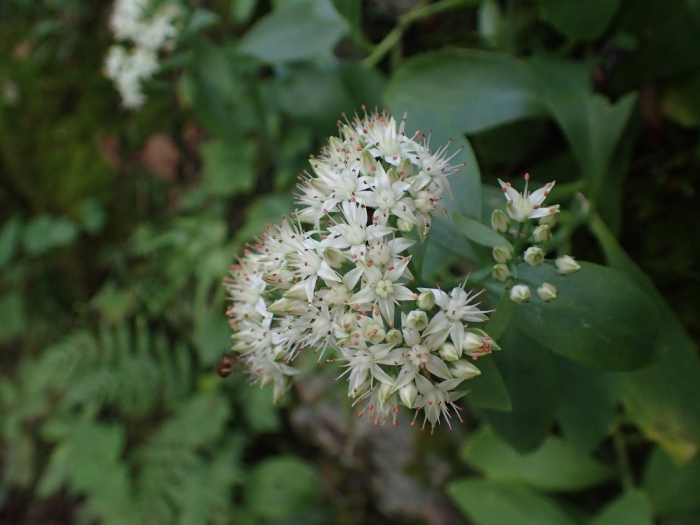Allegheny Stonecrop
(Hylotelephium telephioides)
Allegheny Stonecrop (Hylotelephium telephioides)
/
/

Evan M. Raskin
CC BY 4.0
Image By:
Evan M. Raskin
Recorded By:
Copyright:
CC BY 4.0
Copyright Notice:
Photo by: Evan M. Raskin | License Type: CC BY 4.0 | License URL: http://creativecommons.org/licenses/by/4.0/ | Rights Holder: Evan M. Raskin | Publisher: iNaturalist | Date Created: 2020-09-03T18:31:44-07:00 |


















































Estimated Native Range
Summary
Hylotelephium telephioides, commonly known as Allegheny Stonecrop, is an evergreen perennial succulent native to rocky outcrops and forest clearings in the Appalachian Mountains of the Eastern United States, as well as in parts of Ontario. It typically grows to a height of 2-3 feet (0.6-0.9 meters) and a width of 2 feet (0.6 meters). The plant features fleshy, blue-green leaves and clusters of star-shaped flowers in shades of pink, red, and white that bloom in late summer to fall, adding a splash of color to the garden when many other plants are starting to decline.
Allegheny Stonecrop is valued for its drought tolerance and its ability to thrive in poor, rocky soils, making it an excellent choice for rock gardens, green roofs, and xeriscaping. Its flowers are particularly attractive to pollinators, including bees and butterflies. In cultivation, it prefers full sun to part shade and requires well-drained soil to prevent root rot. While generally low-maintenance, it can be susceptible to pests such as aphids and mealybugs. Gardeners should also be aware that, although it is not aggressive, it can spread over time and may require division to maintain its shape and vigor.CC BY-SA 4.0
Allegheny Stonecrop is valued for its drought tolerance and its ability to thrive in poor, rocky soils, making it an excellent choice for rock gardens, green roofs, and xeriscaping. Its flowers are particularly attractive to pollinators, including bees and butterflies. In cultivation, it prefers full sun to part shade and requires well-drained soil to prevent root rot. While generally low-maintenance, it can be susceptible to pests such as aphids and mealybugs. Gardeners should also be aware that, although it is not aggressive, it can spread over time and may require division to maintain its shape and vigor.CC BY-SA 4.0
Plant Description
- Plant Type: Succulent, Herb
- Height: 2-2.5 feet
- Width: 1.5-2 feet
- Growth Rate: Moderate
- Flower Color: Pink, White
- Flowering Season: Summer, Fall
- Leaf Retention: Evergreen
Growth Requirements
- Sun: Full Sun, Part Shade
- Water: Low, Medium
- Drainage: Fast
Common Uses
Bee Garden, Bird Garden, Border Plant, Butterfly Garden, Drought Tolerant, Fire Resistant, Low Maintenance, Rock Garden, Showy Flowers, Street Planting
Natural Habitat
Rocky outcrops and forest clearings in the Appalachian Mountains
Other Names
Common Names: Livelong, American Orpine, Live-Forever, Life-Everlasting, Frog’s Stomach, Harping Johnny, Midsummer-Men, Orphan John, Live-For-Ever, Witch’s Moneybags, Orpin Des Alleghanys
Scientific Names: , Hylotelephium telephioides, Sedum telephioides, Anacampseros telephioides,
GBIF Accepted Name: Hylotelephium telephioides (Michx.) H.Ohba